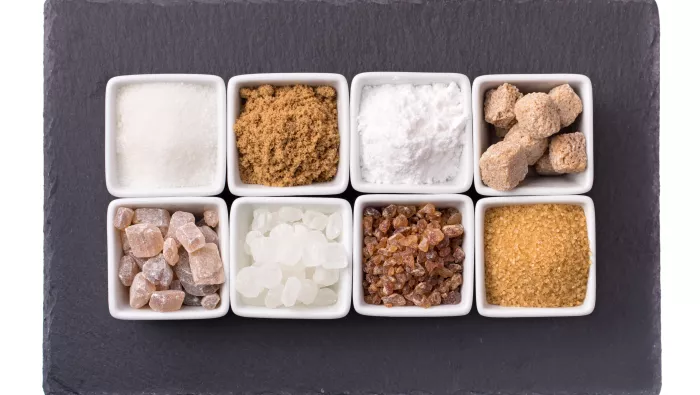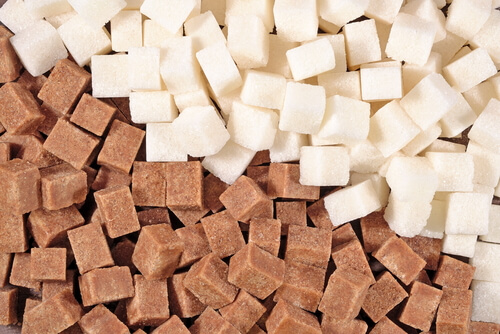Beet Sugar vs Cane: Which Sugar Is the Right Choice for Baking?
Beet Sugar vs Cane: Which Sugar Is the Right Choice for Baking?
Blog Article
Beet Sugar Vs Walking Stick: Discover the most effective Option for Your Sweetening Requirements
The choice in between beet sugar and walking cane sugar expands past mere sweet taste; it includes aspects such as taste accounts, manufacturing methods, and nutritional advantages. While both sugars serve similar objectives in cooking applications, their distinctive qualities might significantly influence your choice based upon certain demands. The natural touches of beetroot sugar may not match every meal, whereas cane sugar is frequently preferred for its clean preference. As we explore these nuances, it comes to be important to think about which option aligns finest with your culinary goals and health and wellness choices. What could stun you are the implications of each choice on your general food preparation experience.
Review of Beet Sugar
Beet sugar, typically stemmed from the sugar beetroot plant, is regularly used as a crucial artificial sweetener in various food products. The sugar beet, a biennial plant, thrives in temperate environments and is primarily grown in areas such as Europe and North America. beet sugar vs cane. The extraction procedure includes cutting the beetroots and drawing out the juice, which is then purified and taken shape to produce granulated sugar
One noteworthy feature of beet sugar is its chemical composition, which is almost identical to that of walking cane sugar, as both consist predominantly of sucrose. This resemblance permits beetroot sugar to be made use of interchangeably with walking stick sugar in recipes and food manufacturing.
Beetroot sugar is additionally noted for its adaptability in different applications, consisting of baking, beverage solution, and confectionery production. In addition, the beetroot sugar sector has made strides in lasting practices, with lots of producers carrying out eco-friendly farming techniques.

Summary of Walking Stick Sugar
Walking stick sugar, stemmed from the sugarcane plant, is just one of the most commonly acknowledged and made use of sweeteners internationally. It is primarily made up of sucrose, a disaccharide that supplies a sweet flavor account necessary for different cooking applications. Walking stick sugar is commonly discovered in granulated kind however is additionally offered as raw sugar, brown sugar, and powdered sugar, each offering distinct functions in cooking and baking.
The farming of sugarcane is noticeable in subtropical and exotic regions, adding to its widespread accessibility. The plant flourishes in cozy climates, needing adequate sunshine and water for optimal growth. Walking cane sugar is usually valued for its all-natural production technique and very little handling, which preserves its taste and nutritional residential properties.
Along with its cooking usages, walking stick sugar plays a considerable duty in the food sector, functioning as a preservative, fermentation substratum, and texturizing representative. Its flexibility expands beyond food, discovering applications in drinks, confections, and even cosmetics. With a long history and a solid cultural presence, walking cane sugar remains to be a preferred option for customers looking for an all-natural sweetening option.
Manufacturing Processes Compared
When contrasting the manufacturing processes of beetroot sugar and walking stick sugar, it comes to be clear that each approach mirrors the unique characteristics of its source material. Beet sugar production starts with gathering sugar beetroots, which are then washed, sliced, and based on warm water removal to liquify the sugar. The resulting juice goes through filtration through liming and carbonation, adhered to by dissipation to focus the juice. Crystallization occurs, yielding raw sugar, which is after that fine-tuned to generate the final product.
On the other hand, cane sugar manufacturing involves collecting sugarcane stalks, which are squashed to draw out juice. This juice is then made clear utilizing heat and lime, similar to the beet process. After explanation, the walking stick juice is evaporated and taken shape. The walking cane sugar process includes a much longer milling and pushing stage, which helps in removing maximum juice from the stalks.
Both processes highlight efficiency, yet the approaches highlight next differences in tools and power use. Beet sugar has a tendency to have an extra simple processing course, while cane sugar production can be a lot more complicated as a result of the fibrous nature of the walking stick stalks. Inevitably, these differences shape the characteristics of the sugars produced.
Nutritional Profiles and Conveniences
Sugar, a staple in numerous diets, varies in dietary accounts and advantages depending on its resource. Both beet sugar and cane sugar mostly include sucrose, offering similar caloric web content-- about 4 calories per gram. Subtle distinctions can impact consumer options and understandings.
Beetroot sugar is originated from sugar beets, which consist of small quantities of vitamins and minerals, such as potassium and calcium, yet these nutrients are existing in minimal amounts when eaten in typical amounts. Conversely, walking stick sugar, extracted from sugarcane, might offer comparable trace nutrients, yet the distinctions are marginal and mostly unimportant in the context of a balanced diet plan.
One significant element is the ecological effect of each source, which can indirectly influence nutritional choices. Beetroot sugar production is frequently viewed as more sustainable due to lower water usage contrasted to cane sugar farming. Furthermore, some people like beet sugar as a result of its non-GMO standing in particular regions, potentially straightening with health-conscious consumer fads.

Taste Distinctions and Uses
Unique taste accounts characterize beetroot sugar and walking cane sugar, affecting their applications in numerous cooking contexts. Beet sugar has a somewhat earthy taste, which can be associated to the soil in which the beets are expanded.
In useful terms, beet sugar and walking cane sugar can normally be used mutually in most dishes. However, pastry chefs and culinary professionals usually lean in the direction of walking cane sugar for its premium capacity to caramelize, which is important in developing intricate flavor accounts in sauces and confections. Additionally, walking cane sugar is preferred in drinks, as its flavor liquifies perfectly, keeping the integrity of the beverage.
Inevitably, the choice in between beetroot and walking stick sugar might come down to individual choice and the particular needs of the dish, with each kind offering unique attributes that can boost the culinary experience.
Verdict
In summary, the option between beetroot sugar and cane sugar pivots on certain culinary applications and individual health considerations. While beetroot sugar presents a slightly earthy taste and sustainable production advantages, walking cane sugar's cleaner sweetness is typically liked in baking and fragile recipes. Assessing the manufacturing processes, nutritional profiles, and flavor differences can direct consumers in websites selecting the most ideal sugar for their needs, making certain both taste contentment and alignment with dietary choices.
Beet sugar, frequently obtained from the sugar beet plant, is frequently utilized as a key sweetening agent in different food products. Cane sugar is commonly located in granulated kind however is likewise offered as raw sugar, brown sugar, and powdered sugar, each offering unique functions in cooking and baking.
When contrasting the manufacturing processes of beet link sugar and walking cane sugar, it becomes clear that each technique shows the unique qualities of its resource product. Beetroot sugar manufacturing starts with gathering sugar beets, which are then washed, sliced, and subjected to hot water extraction to dissolve the sugar. Beet sugar often tends to have a more uncomplicated processing course, while walking cane sugar manufacturing can be a lot more complicated due to the coarse nature of the cane stalks.
Report this page